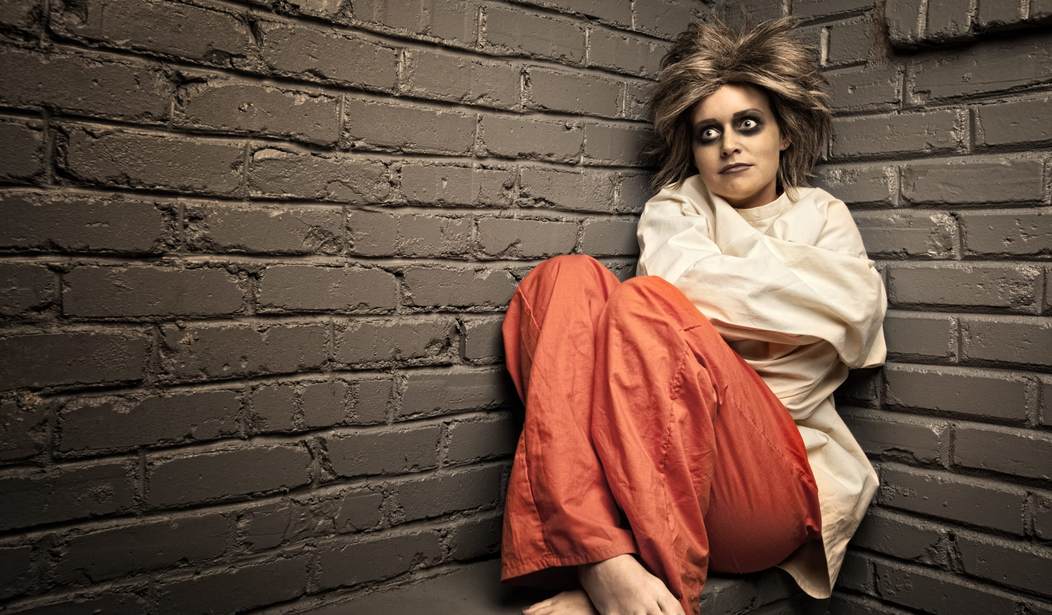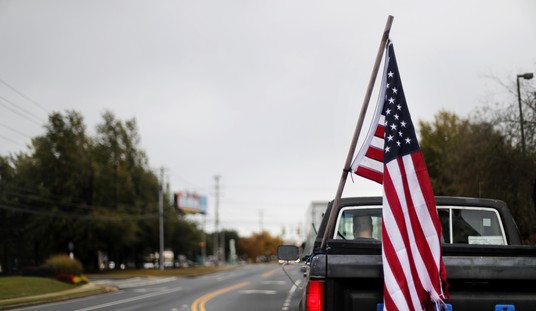At some point, America’s high schools, liberals arts colleges, and universities got taken over by Leftist radicals, who starting in the 1960s had burrowed into the system as eternal graduate students and who gradually emerged, like parasites, to devour their hosts. The result has been increasingly politicized, feminized institutions that, in many cases, bear almost no resemblance to their original incarnations besides their names. They’ve become an expensive parody of education, some costing into six figures per year, all in. Obsessed with “social justice,” they bristle with diversity administrators and other barnacles; teaching has become secondary to the schools’ primary mission of ideological indoctrination; and the diploma has become simply a very expensive certificate of attendance, different from a mail-order diploma mill only in the prestige of the name on the piece of paper.
Okay, okay, we all know that by now. But what we didn’t know for sure — but were certainly beginning to suspect — is that all this “education” is also making our kids crazy:
It is supposed to be the time of their life—the halcyon days of college, when young adults grow, acquire knowledge, and learn new skills. But according to the 2016–17 Healthy Minds Study, an annual survey of mental health on American college campuses, while 44 percent of students said that they were flourishing, 39 percent reported experiencing symptoms of depression or anxiety. The proportion of students experiencing suicidal ideation has grown from six percent in 2007 to 11 percent in 2017. The percentage of students receiving psychotherapy has jumped from 13 percent to 24 percent over the same period. Even though more students are getting help, only a little more than half of those with symptoms of depression and anxiety had received treatment in the previous year.
The rise in mental health challenges is not limited to college students. One in every four adults in the United States will suffer from an anxiety disorder in the course of his or her lifetime, and suicide rates for men and women have risen since 2000. Whether these figures are a passing trend, the new normal, or a harbinger of greater challenges to come, one cannot fully know. But no matter what, universities need to deal with this uptick in psychological distress. No longer can they consider students’ mental health to be outside their area of responsibility.
This story by Sylvia Mathews Burwell in Foreign Affairs seems to me to have the wrong end of the stick. The snowflakes streaming into the shrinks’ offices have, in some cases, literally been driven mad by the “intellectual” atmosphere they’ve been marinating in for years. Further, she accepts with credulity the value of “mental health professionals,” most of whom never met someone who was not also, in their eyes, a prospective “patient.” When you have a degree in psychiatry or psychology, everybody looks like a nut to you.
Taking responsibility for students’ mental health needs is particularly complex at a time when universities are rightfully under pressure about cost and access. And it is all the more complex given that part of the core mission of higher education is to challenge students. To put it succinctly, college is supposed to be hard. How to balance the natural challenges and stress that university life presents while supporting students’ mental health is an increasingly difficult tightrope to walk. Yet it needs to be walked, since students’ mental health is a growing concern, and when that health is poor, it can inhibit the core mission of learning. To address the issue, universities must raise awareness of the problem through education inside and outside the academy; focus on prevention, detection, and treatment; and acknowledge the importance of community—all while recognizing that stress is a part of life.
What’s cracking them up?
In my first year as president of American University, I met with students from a variety of backgrounds and quickly learned that they have a great deal of insight into why they experience more stress and anxiety than previous generations. The answer boils down to three factors: safety, economics, and technology.
Students’ concerns about safety stem from different sources. Most undergraduates have no memory of a world before 9/11. They have grown up with bag searches on subways, SWAT teams at stadiums, and body scanners at airports—constant visual reminders that the United States was attacked and could be again. Students of an older generation would note that those are no different from Cold War–era “duck and cover” drills. Yet today’s students point out that Americans never experienced nuclear war, only the threat of it.
Um, what about the students in Europe who studied through World War II? I should think the prospect of bombs coming through the schoolhouse roof would be more stress-inducing than a bag search.
They have also grown up with increasingly deadly mass shootings. This fall, students arrived on campus with the 2018 attack at Marjory Stoneman Douglas High School, in Parkland, Florida, fresh in their minds, but they also remember the attacks in 2017 at a concert in Las Vegas, in 2016 at the Pulse nightclub in Orlando, in 2012 at Sandy Hook Elementary School, and in 2007 at Virginia Tech. For some students on campus, incidents that have involved racially motivated acts of violence—such as the events in Charlottesville, Virginia, in 2017—add to their fear, stress, and anxiety. Female students have additional cause for worry. While the increasing transparency about how often sexual assault occurs on campus has helped advance the conversation about the issue, it has also added to safety concerns.
But mass shootings are not on the rise. What makes them seem like they are is the obsessive, ghoulish media coverage. As the Cato Institute notes, deaths from mass shootings between 1982 and the present average out to 23 deaths a year, in a country of more than 300 million people. “That makes this sort of random mass shooting one of the rarest mortality risks imaginable. Falling or the flu are far more dangerous.”
So what factor hides behind door number three?
Other fears are rooted in economics. A college education is essential to social mobility, but tuition at both public and private universities continues to rise. Many students, especially first-generation college students, come from families with already stretched budgets and little experience in the nuances of financing higher education, making the prospect of student debt particularly daunting.
Students also worry about the economy they are graduating into—they are old enough to remember the Great Recession—and fear that they will end up jobless, unable to pay off their debt, and forced to live with their parents. Although unemployment is now low in the United States, wage growth has stayed relatively flat throughout the recovery, and early career salaries, in particular, dropped during the recession.
Well, whose fault is that? Were colleges to can their bloated administrations, reduce or eliminate the salaries of superfluous administrators, and/or cut all the bogus “studies” courses from the curriculum, they would not only save money but would be taking a big step toward restoring the actual value of their degrees.
Ms. Burwell does make a couple of important points, but almost as an afterthought:
Today’s young adults seem to arrive at college with less resiliency and a lower appetite for risk and failure. In raising their children, parents have focused more on protecting them from stress and anxiety and less on teaching them how to cope. Today’s incoming classes are of a generation that received athletic trophies merely for participating. Becoming so used to winning makes it all the harder to deal with losing. It makes it harder to learn resiliency. On top of this, parents have created a culture of risk aversion. Today’s students were warned as children not to walk home alone, and they grew up playing on playgrounds designed to break their falls. In many ways, children have been taught both explicitly and implicitly to avoid risk, and for many of them, the resulting safety has made them less capable of coping with failure and disappointment.
But risk aversion is a quintessentially female principle; as Camille Paglia famously observed in her masterpiece, Sexual Personae: “If civilization had been left in female hands, we would still be living in grass huts.” Throughout history, men have prized achievement — in war, in exploration, in just doing damned dangerous jobs — over their own lives. It’s one of the fundamental differences between the sexes and no amount of wishful thinking is going to change that.
Another way that today’s students differ from their predecessors is in their relationships with their parents and other adults in their lives. Gone are the days when a five-minute phone call every Sunday was the extent of communication with family. For many students, thanks in part to advances in technology, there is nearly constant communication with parents through texting and calls.
The real solution, of course, is not to be found in Viennese Voodoo, but in forcing children to confront the fact that life isn’t fair, that bad things happen to good people, and that bumps, bruises and broken bones aren’t all bad if the trade-off was worth it. Today’s students are suffering from a problem inherent in liberalism: that when the gap between what ought to be and what actually is becomes unbridgeable, something’s got to give.
Naturally, her solution is exactly the wrong one:
There is general agreement that the solution lies in more education about the issue, inside and outside the academy. Creating awareness of the problem and teaching faculty, staff, and students how to prevent, recognize, and respond to it can help. Just as many campuses have made progress on educating students about sexual assault, they can do the same when it comes to mental health.
It’s a perfect racket.








Join the conversation as a VIP Member